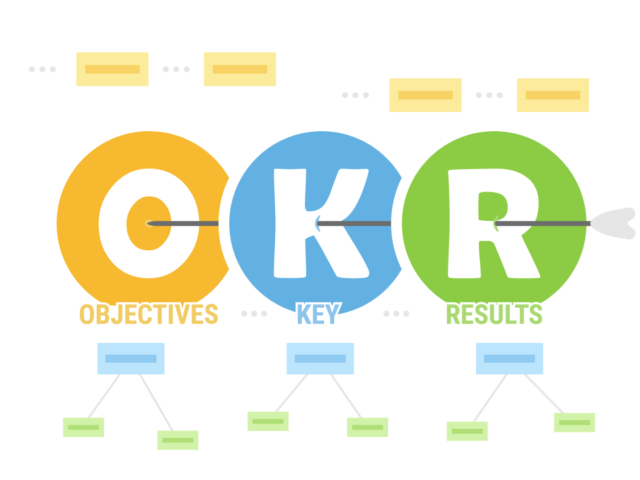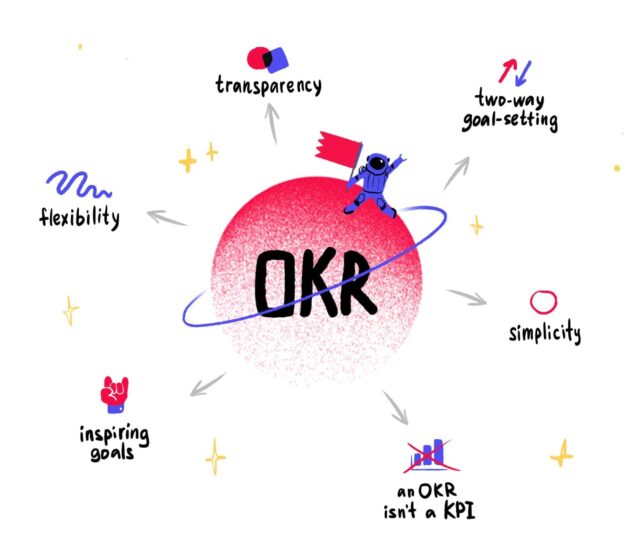
If you own a business, chances are good that you have at least heard about OKRs.
Of course, OKRs – otherwise known as Objectives and Key Results – is a way in which some of the most powerful companies in the world have managed to realign their goals and make sure that everyone working on the team is doing everything they can to achieve those specific goals.
Depending on the size of your company, you may be wondering if it could be a good tool for you and the entirety of your team.
The basic truth is that it can be utilized to help improve and refocus companies no matter the size. Truly, if your company is just you trying to make a dream come to life or a fortune 500 company looking to step into the new decade with strength, then it can help. This company provides you with suitable OKR software and some OKRs examples to refer to.
After all, companies such as Google, Netflix, and Adobe have all utilized OKRs in the past. The reason why is because Objectives and Key Results are simply a powerful way to express the goals of any company.
It can help create a full mission and vision, help improve employee engagement, and bring to the surface the explicit top priorities of a given business. The major reasons why are simply the F.A.C.T.S.
At least, that is what John Doerr, one of the earliest adopters of OKRs, believes. When it comes to OKRs, the F.A.C.T.S. means Focus, Alignment, Commitment, Tracking, and Stretching.
Let’s break down what all five of those words mean and how OKRs can help his company no matter what size it currently is and what size you want it to eventually be at!
Let’s get started.
Focus

Focus is without a doubt the primary benefit when a company decides to use OKRs. The reason why is because they force a company to establish a limited amount of goals as well as a limited amount of key benchmarks that will allow everyone involved to keep track of where they are in that pursuit.
When it comes to how many goals – or objectives – should be involved in any good OKR, there certainly can be multiple, but never more than seven.
In fact, it is this requirement to keep things small and focused that leads to the success of many OKRs. This focus on the specific objectives as well as the verifiable and measurable key results will help keep a company or team on track along the way.
Alignment

Once the objectives are set, that is one the actual work will finally begin. They are so important because they allow everyone from the top-down and from the bottom up to remain aligned on those specific objectives going forward.
Making sure that everyone is aligned with those goals and knows what must be done to achieve those goals helps improve the chances of overall success.
Commitment

After you have managed to focus on what must be done and align your entire team to reach those goals, next comes commitment. In fact, commitment is a major bedrock of OKRs and the commitment is to the belief that everything that has been agreed upon in terms of the direction of the company will be achieved. Tracking the commitments throughout an OKR are done transparently.
Each team member will be expected to create very clear signals to everyone that they are working towards their OKRs.
There are a lot of different ways to do this, either through using online programs specifically created to create and track them or a simple Google Sheet.
Ultimately, this commitment will allow everyone on board to keep track of where they are in their key results and how well of a job they are doing when it comes to ultimately achieving the objectives in the future.
Tracking

Tracking your company’s OKRs from output to ultimate outcome is why using objectives to manage is so popular with some of the most powerful and successful companies in the world. Every OKR should be trackable and verifiable easily.
Remember, OKRs do not require daily tracking, but weekly checkups are truly essential when it comes to preventing slippage as well as preventing people from losing track of what they are doing and why they are doing it.
Having these crucial reference points that you can grade your current OKRs is the secret sauce to achieving a long-term goal in small steps.
Stretching

Finally, stretching is something that is not entirely measurable but is instead about the state of mind that they can help encourage businesses and those that run them to go down. Thinking in a big-picture goals way and setting up the key results to help you achieve them will often lead to a company thinking about the big picture overall more. Ultimately, they can help push organizations to strive further, succeed more, and in the end improve from the bottom up.
OKRs are not only a way to help a company identify and achieve big goals, but can also ultimately lead to a crucial paradigm shift within the company, helping it look towards the future and deciding what kind of company it wants to be down the line.
Conclusion
As you can see, there are really wonderful aspects of OKRs that companies can – and do – use no matter what size they are. From a local company that simply wants to improve its quarterly earnings to a mid-sized company that wants to improve its customer service, to a global corporation that is looking to dominate a new market on the globe, they can help them achieve those goals the right way.
If you are a business owner, chances are good you now have a much better idea of why and how OKRs can help companies such as yours. Now, all you have to do is start getting to work with your team on establishing your company’s primary objectives and identifying the key results that can help you measure your path to achieving those goals.












